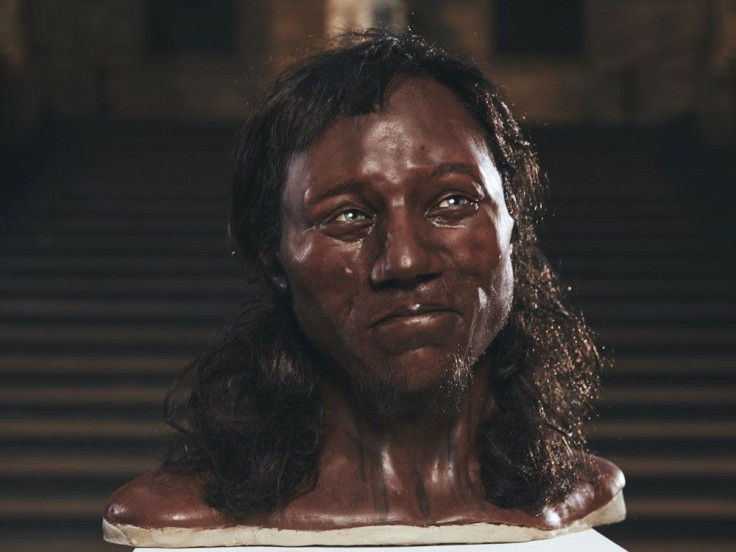First British Human Population Was Dark-Skinned, Had Blue Eyes, Dark Curly Hair

White people throughout the world, whichever continent they may live on now, are all descendants of Europe. Though light skin, blonde hair and blue eyes have been a stereotypical description of northern Europeans for centuries, it turns out some of those physical traits are a relatively recent evolution, and that northern Europeans were actually dark skinned to start with.
Researchers from University College London (UCL) and Natural History Museum, London, undertook genetic analysis of Cheddar Man, the name given to the oldest complete human skeleton to have been found in the United Kingdom. The fossil itself dates back to about 10,000 years and was discovered about 115 years ago in a cave in Cheddar village (hence the name, which has nothing to do with cheese).
“The results indicate that Cheddar Man had blue eyes, dark coloured curly hair and ‘dark to black’ skin pigmentation. Previously, many had assumed he had reduced skin pigmentation. The discovery suggests that the lighter pigmentation now considered to be a defining feature of northern Europe is a far more recent phenomenon,” a UCL statement said Wednesday.
"It really shows up that these imaginary racial categories that we have are really very modern constructions, or very recent constructions, that really are not applicable to the past at all," Tom Booth, an archaeologist at the Natural History Museum, who worked on the project, told the Guardian.
For their analysis, the researchers needed some bone powder, which they extracted from the skull by drilling a small hole into it. The cool and stable conditions in the limestone cave where the fossil was found likely contributed to the unusually well-preserved state of the DNA, and that allowed the research team to garner enough information for facial reconstruction, among other genetic traits.
Based on that information and a hi-tech three-dimensional scan of the skull, model makers fleshed out the face and its features, creating a likeness of Cheddar Man’s possible appearance.
“Cheddar Man’s genetic profile places him with several other Mesolithic-era Europeans from Spain, Hungary and Luxembourg whose DNA has already been analyzed. These ‘Western Hunter-Gatherer’s’ migrated into Europe at the end of the last ice age and the group included Cheddar Man’s ancestors,” Mark Thomas, a UCL professor involved in the DNA analysis, explained in the statement.
The present-day indigenous population of Britain has about 10 percent of its genes derived from the people Thomas referred to.
Chris Stringer from the Natural History Museum, said: “I first studied ‘Cheddar Man’ more than 40 years ago, but could never have believed that we would one day have his whole genome — the oldest British one to date! To go beyond what the bones tell us and get a scientifically-based picture of what he actually looked like is a remarkable (and from the results quite surprising!) achievement.”

Cheddar Man likely died a violent death, as suggested by a hole in his skill over the right eye. Even the cave where the fossil was found had been used by its occupants for cannibalism, display of trophies and secondary burials.
It is thought the earliest Homo sapiens in Europe had already spread across the continent about 40,000 years ago. There were other archaic human populations already in Europe at the time, and there is evidence that modern humans interbred with the local species. Neanderthals, for instance, had been in Europe already for about 200,000 years. But by 10,000 ago, when Cheddar Man dates from, Neanderthals had already long been extinct, dying out about 25,000 years ago.
The research was undertaken for a new television documentary titled “First Brit: Secrets of the 10,000 Year Old Man,” which will air Feb. 18 on the U.K.’s Channel 4.
© Copyright IBTimes 2025. All rights reserved.



















